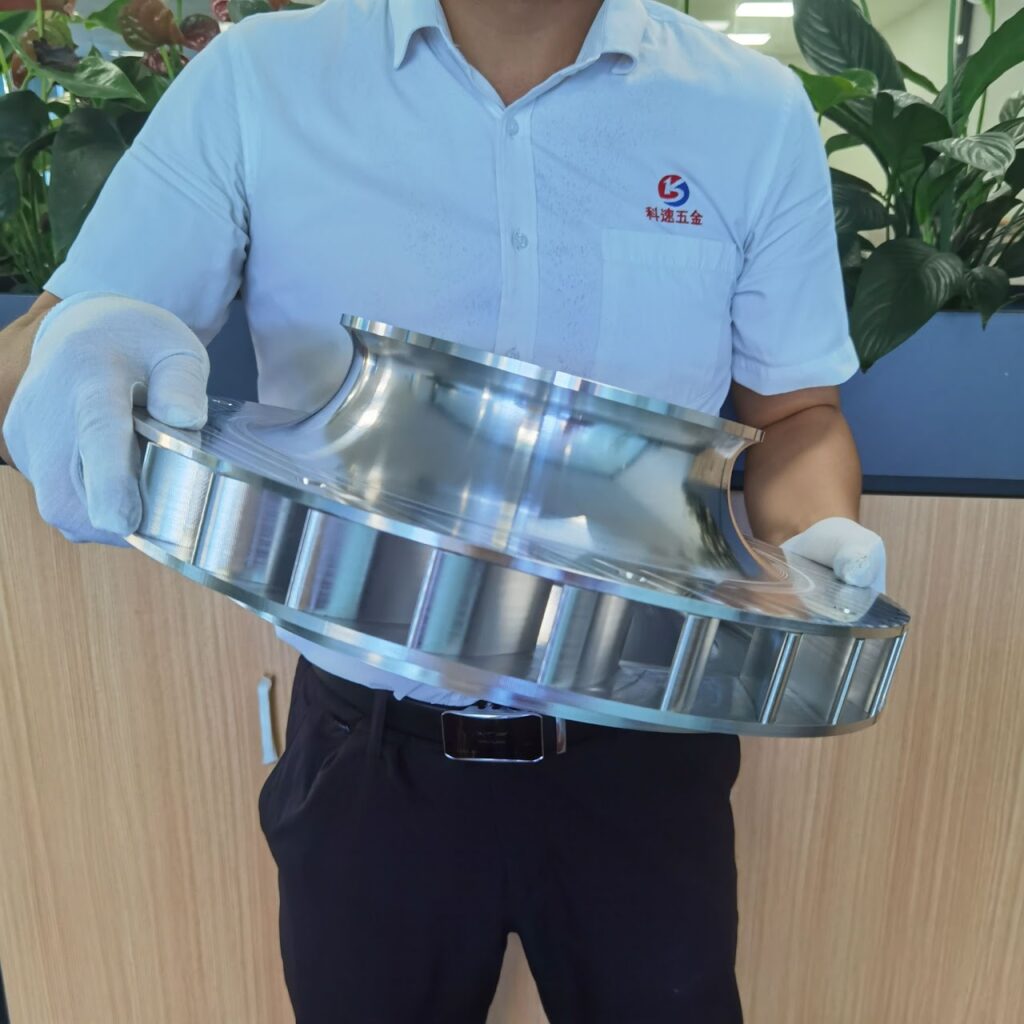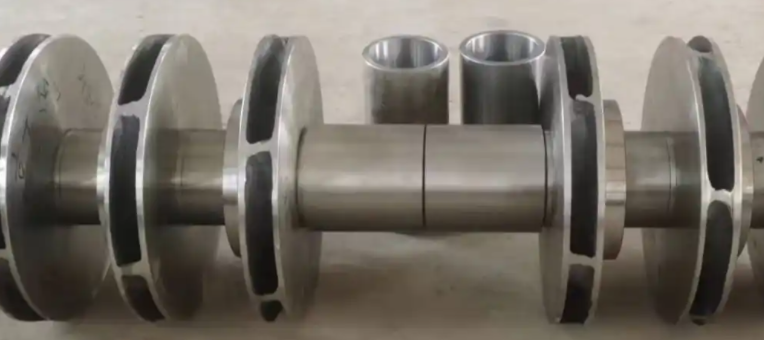Pump impellers are critical components in centrifugal and other pump types, determining their hydraulic performance. Impellers can be classified based on flow direction, blade enclosure, suction method, and specialized designs. This article provides a detailed, professional overview of impeller classifications, including their characteristics, applications, and technical parameters, to assist engineers and industry professionals in selecting the right impeller for specific needs.
Classification by Liquid Flow Direction
The direction in which liquid flows through the impeller is a primary classification criterion, as it directly impacts the pump's flow rate and head. Below are the three main types based on flow direction.

Centrifugal Impeller (Radial Flow)
Centrifugal impellers draw liquid into the center and expel it radially outward through the impeller's vanes. They are the most common type, widely used in centrifugal pumps due to their versatility.
- Flow Characteristics: Medium to high head, moderate flow rate.
- アプリケーション: Water supply systems, HVAC, industrial processes, and chemical plants.
- 技術パラメーター:
- Head Range: 10–300 meters
- Flow Rate: 5–5000 m³/h
- Efficiency: Up to 85–90%
- メリット: High efficiency, robust design, suitable for clean or slightly contaminated liquids.
- 制限事項: Less effective for very high flow, low-head applications.
Axial Flow Impeller
Axial flow impellers, resembling propellers, move liquid parallel to the pump shaft. They are typically used in axial flow pumps for high-flow, low-head applications.
- Flow Characteristics: High flow rate, low head.
- アプリケーション: Irrigation, flood control, wastewater management, and cooling water circulation.
- 技術パラメーター:
- Head Range: 1–10 meters
- Flow Rate: 1000–50,000 m³/h
- Efficiency: Up to 80–85%
- メリット: Handles large volumes efficiently, ideal for low-pressure systems.
- 制限事項: Limited head capacity, sensitive to viscosity changes.
Mixed Flow Impeller
Mixed flow impellers combine radial and axial flow characteristics, directing liquid at an angle between radial and axial directions. They are suited for applications requiring moderate flow and head.
- Flow Characteristics: Medium flow rate, medium head.
- アプリケーション: Municipal water supply, sewage treatment, and industrial cooling systems.
- 技術パラメーター:
- Head Range: 5–100 meters
- Flow Rate: 50–10,000 m³/h
- Efficiency: Up to 80–88%
- メリット: Balances flow and head, versatile for various applications.
- 制限事項: Less efficient than centrifugal impellers for high-head applications.
Classification by Blade Enclosure
The degree of blade enclosure affects the impeller’s efficiency and ability to handle different liquid types. This classification includes closed, semi-open, and open impellers.

Closed Impeller
Closed impellers have blades enclosed by front and rear shrouds, maximizing efficiency for clean liquids.
- Characteristics: High efficiency, low leakage.
- アプリケーション: Clean water pumps, chemical processing, and oil refining.
- 技術パラメーター:
- Efficiency: 85–90%
- Suitable Liquid: Clean or slightly contaminated (solid content < 0.1%)
- Head Range: 10–300 meters
- メリット: High efficiency, stable performance.
- 制限事項: Not suitable for liquids with solids or high viscosity.
Semi-Open Impeller
Semi-open impellers typically have a rear shroud but no front shroud, allowing easier passage of small particles.
- Characteristics: Moderate efficiency, good for mildly contaminated liquids.
- アプリケーション: Sewage pumps, slurry pumps, and food processing.
- 技術パラメーター:
- Efficiency: 70–80%
- Suitable Liquid: Liquids with small particles (solid content < 5%)
- Head Range: 5–150 meters
- メリット: Easier to clean, handles small solids.
- 制限事項: Lower efficiency than closed impellers.
Open Impeller
Open impellers consist of blades without shrouds, designed for handling viscous or solid-laden liquids.
- Characteristics: Low efficiency, high solids-handling capability.
- アプリケーション: Sludge pumps, wastewater treatment, and pulp and paper industries.
- 技術パラメーター:
- Efficiency: 60–70%
- Suitable Liquid: High viscosity or solid content (up to 10%)
- Head Range: 5–100 meters
- メリット: Handles large solids, resistant to clogging.
- 制限事項: Lower efficiency, higher wear.
Classification by Suction Method
The suction method determines how liquid enters the impeller, affecting pump design and performance.

Single-Suction Impeller
Single-suction impellers draw liquid from one side, making them compact and suitable for smaller pumps.
- Characteristics: Simple design, unbalanced axial forces.
- アプリケーション: Domestic water pumps, small industrial systems.
- 技術パラメーター:
- Flow Rate: 5–1000 m³/h
- Head Range: 5–150 meters
- Efficiency: 70–85%
- メリット: Compact, cost-effective.
- 制限事項: Axial thrust requires balancing mechanisms.
Double-Suction Impeller
Double-suction impellers draw liquid from both sides, balancing axial forces and enabling higher flow rates.
- Characteristics: Balanced axial forces, high flow capacity.
- アプリケーション: Large-scale water supply, cooling systems, and power plants.
- 技術パラメーター:
- Flow Rate: 500–20,000 m³/h
- Head Range: 10–200 meters
- Efficiency: 80–90%
- メリット: High flow, reduced axial thrust.
- 制限事項: Larger, more complex design.
Specialized Impeller Types
Beyond standard classifications, specialized impellers are designed for niche applications.
- Vortex Impeller: Creates a vortex to handle solids and sewage, reducing clogging. Used in wastewater pumps with solid content up to 15%.
- Screw Centrifugal Impeller: Combines screw and centrifugal action for large particles or viscous liquids, used in dredging and slurry applications.
- Multistage Impeller: Multiple impellers in series for high-head applications, such as boiler feed pumps. Head range: 100–1000 meters.

Summary Comparison
The table below summarizes the key impeller types, their characteristics, and applications for quick reference.
| Classification | Type | Key Features | アプリケーション |
|---|---|---|---|
| Flow Direction | Centrifugal | Medium-high head, moderate flow | Water supply, HVAC, chemical plants |
| Axial Flow | High flow, low head | Irrigation, flood control | |
| Mixed Flow | Medium flow, medium head | Sewage treatment, cooling systems | |
| Blade Enclosure | Closed | High efficiency, clean liquids | Clean water, oil refining |
| Semi-Open | Moderate efficiency, small solids | Sewage, food processing | |
| Open | Low efficiency, high solids | Sludge, wastewater | |
| Suction Method | Single-Suction | Compact, small flow | Domestic pumps, small systems |
| Double-Suction | High flow, balanced forces | Large-scale water supply, power plants |
結論
Selecting the appropriate impeller type is critical for optimizing pump performance. By understanding the classifications based on flow direction, blade enclosure, suction method, and specialized designs, engineers can match impellers to specific operational requirements. Consider factors such as flow rate, head, liquid properties, and maintenance needs when choosing an impeller to ensure efficiency and reliability.
